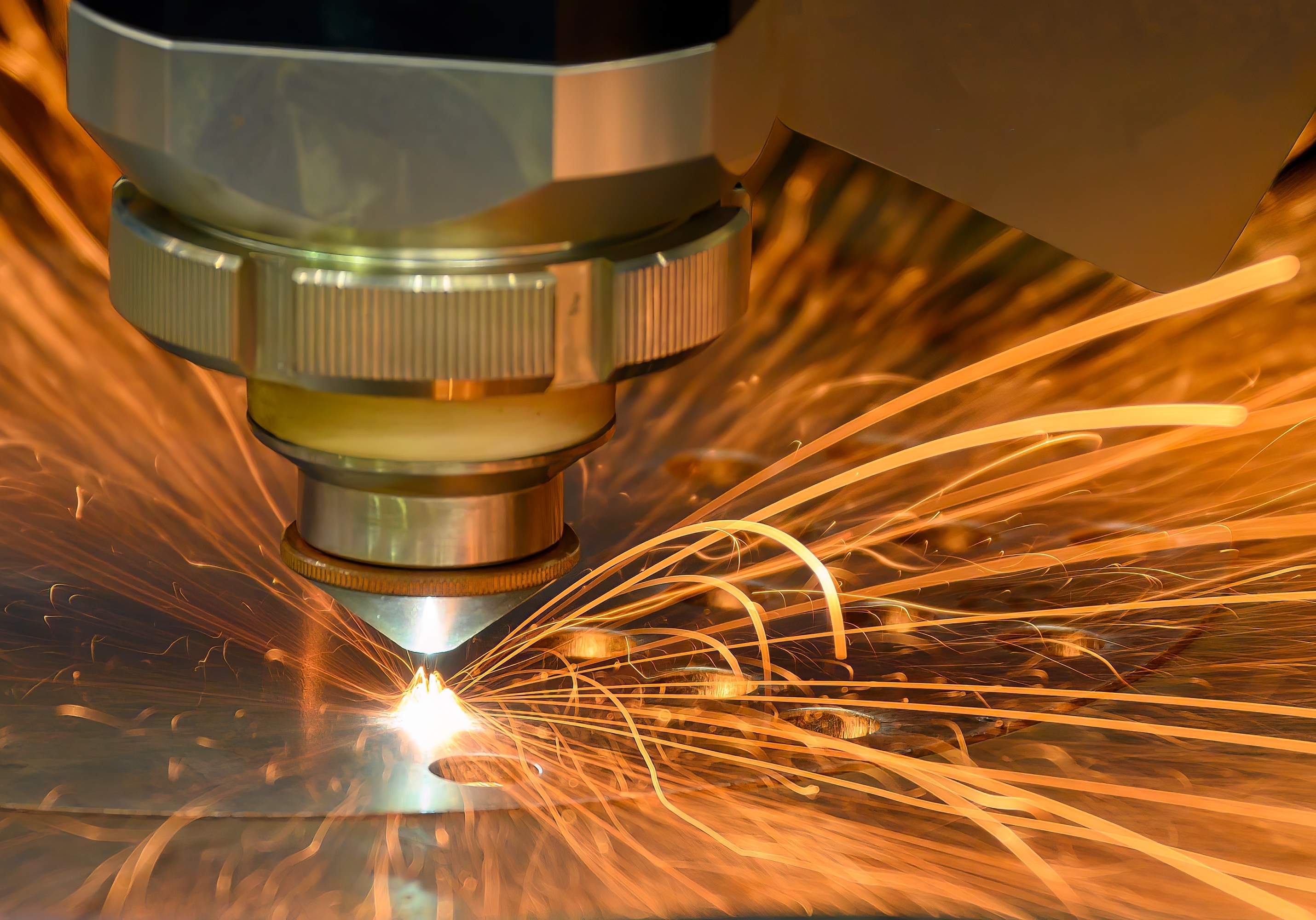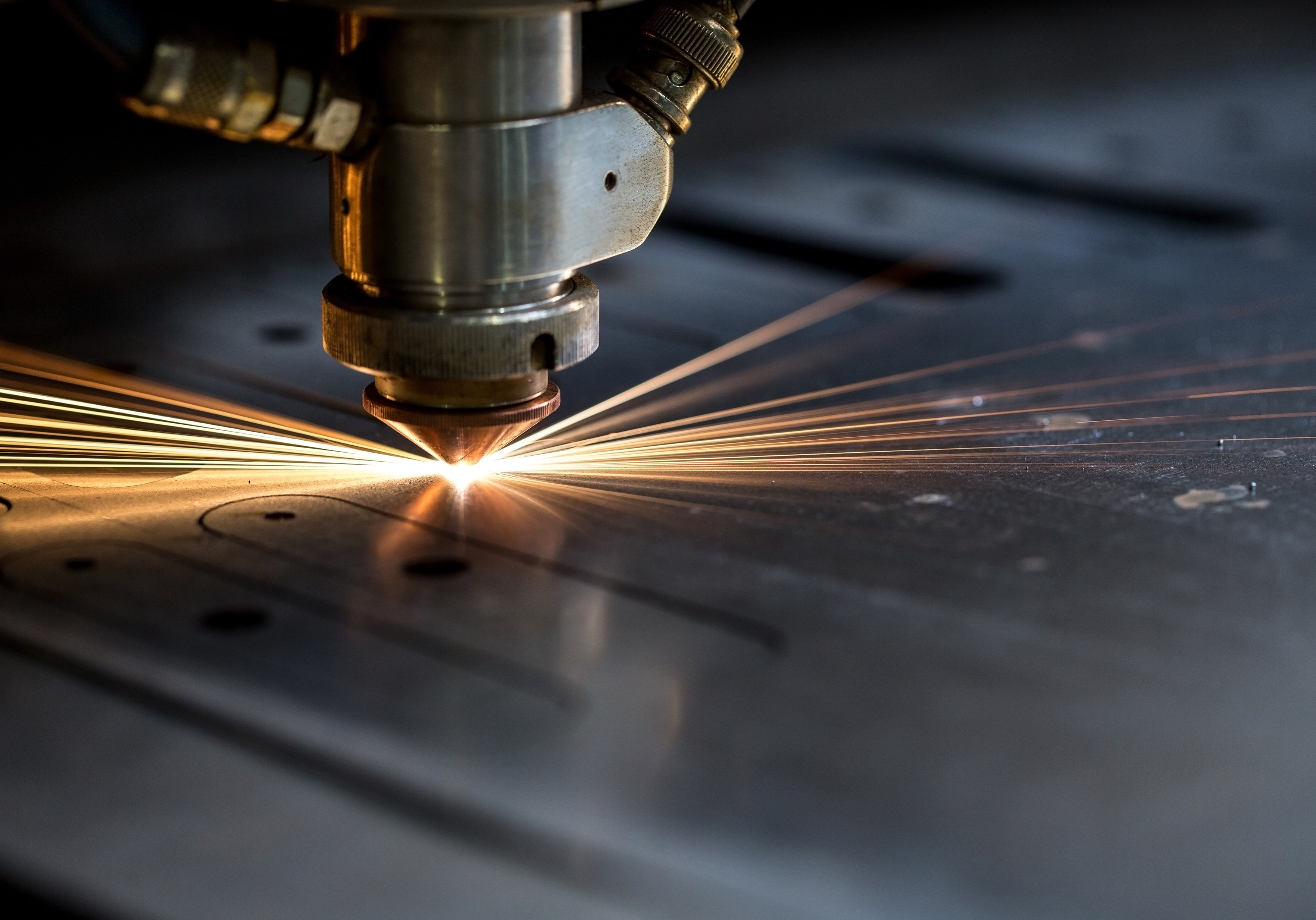When it comes to laser cutting, precision plays a pivotal role in your project’s success.
Unlike laser etching, which is the process of creating marks on your workpiece by melting its surface, laser cutting involves cutting the material in ways that can drastically impact its structural integrity. So how do you ensure your product is structurally sound, whilst meeting your design requirements? There are various factors to consider, including your choice of materials and methodology.
In this article, we provide you with essential tips to optimise your laser-cutting design, ensuring flawless results. Here at Link Business, we provide fiber laser cutting services for various requirements — get in touch today, for help cutting your workpieces.
Understanding the Laser Cutting Process
Laser cutting is the process of cutting materials using a laser beam. Here at Link Business, we use fiber-cutting methods, where the laser beam is transmitted through an optical fiber, creating a high-intensity spot on the surface of the material, which melts or vaporises it. To learn more about this method, visit our recent article on how it differs from CO2 technology.
We use CNC machinery, where the manufacturing process uses computer software — and pre-programmed rules — to control the movement of our laser cutter. Typically, this process begins with creating a 2D or 3D CAD or vector file, converted into a machine-readable format which completes the Laser Cutting on your behalf.
For 2D cutting, this method is often referred to as “vector cutting,” where a laser cutter traces the path defined by a vector file. This can be contrasted with raster engraving, which doesn’t cut through the material, but instead etches or engraves as it moves across the surface of your workpiece.
The Advantages of Laser Cutting
Laser cutting brings a host of advantages which make it a popular choice for a variety of projects. For example, our methods consistently offer:
- Precision and Repeatability: Compared to its counterparts, later cutting provides the highest level of precision, ensuring accurate cuts every time — with a dimensional accuracy of approximately 0.0005 inches.
- Material Versatility: Making it perfect for both thick and delicate materials, working on detailed designs and larger cuts.
- Speed and Efficiency: Compared to traditional mechanical cutting methods, laser cutting is much faster. We also provide a 24/7 lights-out service, allowing us to meet your tight project deadlines.
- Minimal Heat Affected Zone: During fiber laser cutting, the exposure time of the material is minimal — meaning there is a much smaller HAZ compared to other cutting methods.
- Reduced Material Waste: Due to its precision and accuracy, CNC laser cutting produces significantly less waste compared to traditional methods.
Considering these advantages, incorporating laser cutting into your design process could significantly enhance the quality and efficiency of your projects.
How to Design for Laser Cutting
Are you ready to start using laser cutting within your projects? Whether you’re cutting yourself or utilising a subcontractor, the success of your project relies on your design. Below, we discuss how to design for laser cutting, highlighting important factors to consider. Here at Link Business, we provide CNC laser cutting services to guide you throughout this process, get in touch today to discuss your needs with our expert team.
Design Software for Laser Cutting
Before you begin, select a design software which allows you to accurately create a design which suits your needs.
Vector graphics are created from mathematical formulas, composed of points, lines, and curves. Unlike traditional pixel-based images, vector graphics are resolution-flexible and can be resized without sacrificing sharpness. This versatility makes them particularly suited for CAD designs.
You must pick software which can accommodate this purpose. For example, raster graphic software (like Adobe Photoshop) is not suitable for Laser Cutting, as it creates images from pixels which don’t scale well. Ideally, you should choose vector modelling software which can create both 2D and 3D graphics — examples of this include SolidWorks, Creo, AutoCAD, and Fusion360. This should result in file types similar to SVG, DWG, STEP, or OBJ.
For help with this process, get in touch today to chat through your requirements with our expert team.
Basic Laser Cutting Settings
Understanding the basic settings for laser cutting — power, speed, and frequency — is key to optimising your design process and achieving the best possible results. Things to consider include:
- Power: how strongly the laser fires, affecting how it interacts with materials, particularly metal. High power may burn thinner materials, so adjust accordingly.
- Speed: refers to how fast the laser cutter moves. A high speed will cut faster, but may not successful cut all the way through your piece. Slower speeds will cut through but could burn or melt your workpiece. Therefore, you should adjust this setting based on your material choice.
- Frequency: or how fast the laser pulses, which can impact the cleanliness of your cut. You should be careful here, as higher frequency could cause flammable materials to catch fire.
Choosing the Right Material for Your Project
When selecting your settings, it's also crucial that you pick the material which is right for your project, as this choice could impact the strength of your final piece.
The materials you select should depend on your intended application, and laser cutting is versatile and can be used on various materials. You should also ensure your material choice is compatible with your design, as some are better suited for intricate designs with small features. Here at Link Business, we can provide fabrication and laser-cutting services for a range of materials, including metals and plastics.
Understanding and Accounting for KERF
KERF in laser cutting refers to the width of the gap created by the laser beam as it cuts through your material (which ranges from 0.08m — 1mm depending on various factors). The KERF is wider at the bottom of the material due to the laser beam spreading out after the focal point, resulting in a slightly trapezoidal shape. It is important to consider this when designing laser-cut projects, as it impacts precision and the maximum thickness of material that can be effectively cut.
Understanding and accounting for the KERF is crucial for achieving accurate and high-quality results. For instance, if you're creating living hinges, you'll need to account for the KERF to ensure your design opens and closes correctly. A good practice is to do some test cuts with your chosen material to observe the KERF produced by your laser cutter. This way, you can adjust your design accordingly for optimal results.
Minimal Distance Between Cutting Lines
It's crucial to pay attention to the minimal distance between cutting lines. This is a key aspect when designing for laser cutting and will impact the overall strength and accuracy of your workpiece. Too close, and your parts can break or burn. Too far, and you're wasting material. Your software can help you maintain this balance. Use its measuring tools to ensure adequate clearance between lines.
Handling Thin Features
The laser beam itself is small and focused, meaning it can usually create fine, small details. However, there is a limit to how thin your material can handle, so you need to balance aesthetics with stability. Too thin, and your design could break or warp during or after cutting.
Where possible, you should minimise the complexity of your design to ensure its structural integrity remains intact.
Designing for Ease of Assembly
If you’re cutting to assemble multiple parts, there are things you can do to make the assembly process as easy as possible. For instance, you could try to reduce complexity by eliminating unnecessary open shapes and removing intersecting lines. By simplifying your CAD model, you can reduce the chances of misalignment during assembly.
The use of nodes can also help in the assembly process. Nodes are small bumps on laser-cut parts that enhance friction between connecting pieces. They help distribute stress when joining two parts, reducing strain on the slot's entire surface. You should also keep in mind that your design should be easy to replicate and assemble when moving from the prototype stage to the final product.
Choosing Suitable Joints for Structural Integrity
When it comes to assembling multiple parts, selecting the right type of joints plays a unique role in bolstering a piece's structural integrity. Each joint has its unique strengths and applications, though some include:
- Finger Joints: interlocking tabs on flat plates joined perpendicularly to form corners, providing strong surface bonding for durability.
- Mortise and Tenon Joints: these involve ‘fingers’ on one piece passing through holes in another, forming strong connections for ‘T’ structures and mounting support beams in laser-cut designs. Ideal for strength and simplicity, these joints offer efficient assembly in complex structures.
- Slotted Joints: involves two pieces with slots that slide into each other, creating ‘X’ structures in laser-cut material. Offering easy assembly without glue or screws, these joints are common and efficient for connecting pieces without additional fasteners.
- Dovetail and Jigsaw Joints: these are typically used to mount two materials flush to one another, creating even top and bottom surfaces. Common with wooden pieces, these joints excel in tensile strength, ideal for heavy-duty applications.
Overall, ensuring that your joints are accurately measured and well-fitted will result in a final product which is structurally sound, durable, and aesthetically pleasing.
By now, you should better understand the importance of your laser cutting design, and how it could impact the longevity and structural integrity of your workpiece. Knowing this, you should utilise the design tips we have outlined to ensure a successful cut — regardless of whether you are carrying out the process yourself or using a subcontractor.
Need help with Laser Cutting? Here at Link Business, we provide laser cutting for a variety of applications, handling a range of materials and components in an accurate time— and cost-effective manner. We deal with all quantities and provide a lights-out service for projects with tight turnaround times.
We are always on hand to chat through your requirements and support you in the CAD or vector design of your workpiece. Get in touch today to chat with our expert team.

